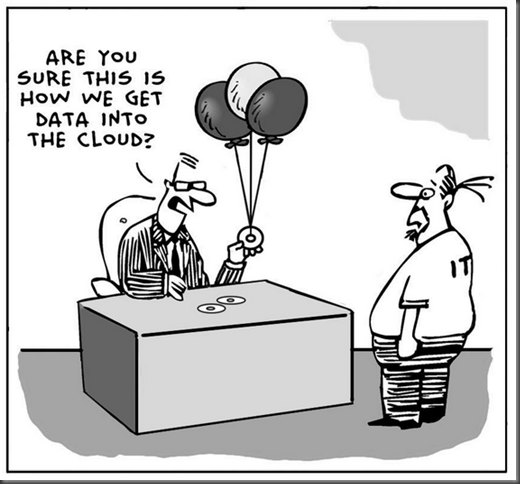The idea behind any cloud computing proposal is for you to pay only for what you use, scaling up or down as per business requirements. This dynamic capability offered by service providers is called utility computing and is analogous to your utility service providers’ model: they charge you by the amount of energy you use. You can scale back your energy bill by reducing the energy usage, or your energy bill will go up during peak load. If you invest in a highly available and scalable infrastructure on premise, scaling in either direction based on demand is difficult.
So, in the long term, cloud platforms are designed to reduce your average operating costs by giving you the flexibility to commission and decommission infrastructure depending on the business needs.
Term "Cloud" specifically means applications, platform, infrastructure and consumer services offered by service providers to build applications for the Internet. Acronyms like software as a service (SaaS), platform as a service (PaaS), Infrastructure as a cloud (IaaS), software plus service (S + S), and database as a service (DaaS) all represent a piece of cloud services in one way or the other. Let's discuss three common approaches viz. - SaaS, PaaS and IaaS.
Software as a Service
Software as a Service (SaaS) makes use of a cloud computing infrastructure to deliver one application to many users, regardless of their location, rather than the traditional model of one application per desktop. Instead of installing and maintaining software, you simply access it via the Internet, freeing yourself from complex software and hardware management. Most SaaS applications can be run directly from a Web browser, without any downloads or installations required. SaaS eliminates the need to install and run applications on individual computers. With SaaS, it’s easy for enterprises to streamline their maintenance and support, because everything can be managed by vendors: applications, runtime, data, middleware, O/S, virtualization, servers, storage, and networking. Gmail is one famous example of an SaaS mail provider.
Platform as a Service
In this approach, you rent a platform on which you deploy your applications without configuring the infrastructure and without the limitations of the SaaS approach. What developers gain with PaaS is a framework they can build upon to develop or customize applications. PaaS makes the development, testing, and deployment of applications quick, simple, and cost-effective, eliminating the need to buy the underlying layers of hardware and software. Similar to the way that you might create macros in Excel, PaaS allows you to create applications using software components that are controlled by a third-party vendor. The Windows Azure platform fits best in the PaaS category, because it doesn’t provide access to the underlying virtualization environment or operating system details such as the network interface, IP configuration, and disk management.
Infrastructure as a Service
Infrastructure as a Service is sometimes referred to as Hardware as a Service (HaaS), in which Vendors provide the hardware infrastructure to build solutions, and you rent the hardware such as servers, load balancers, firewall and cables. The service provider owns the equipment and is responsible for housing, running and maintaining it. The client typically pays on a per-use basis. You can scale up by requesting more servers and reconfiguring the load balancer without purchasing more hardware. Similarly, you can scale down at any time by reconfiguring the infrastructure you rented from the cloud service provider.
Lastly, on a lighter note :)
References -
